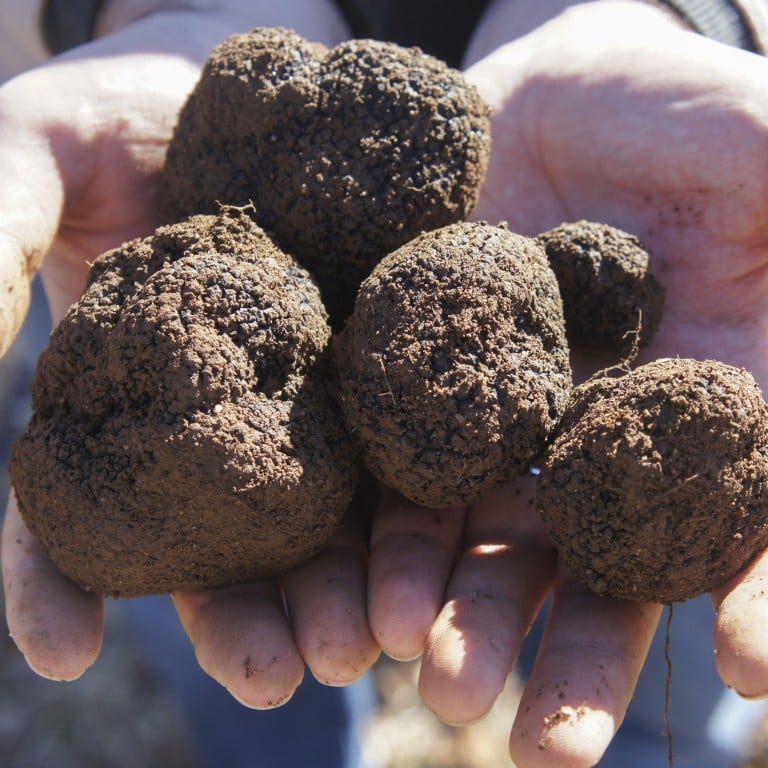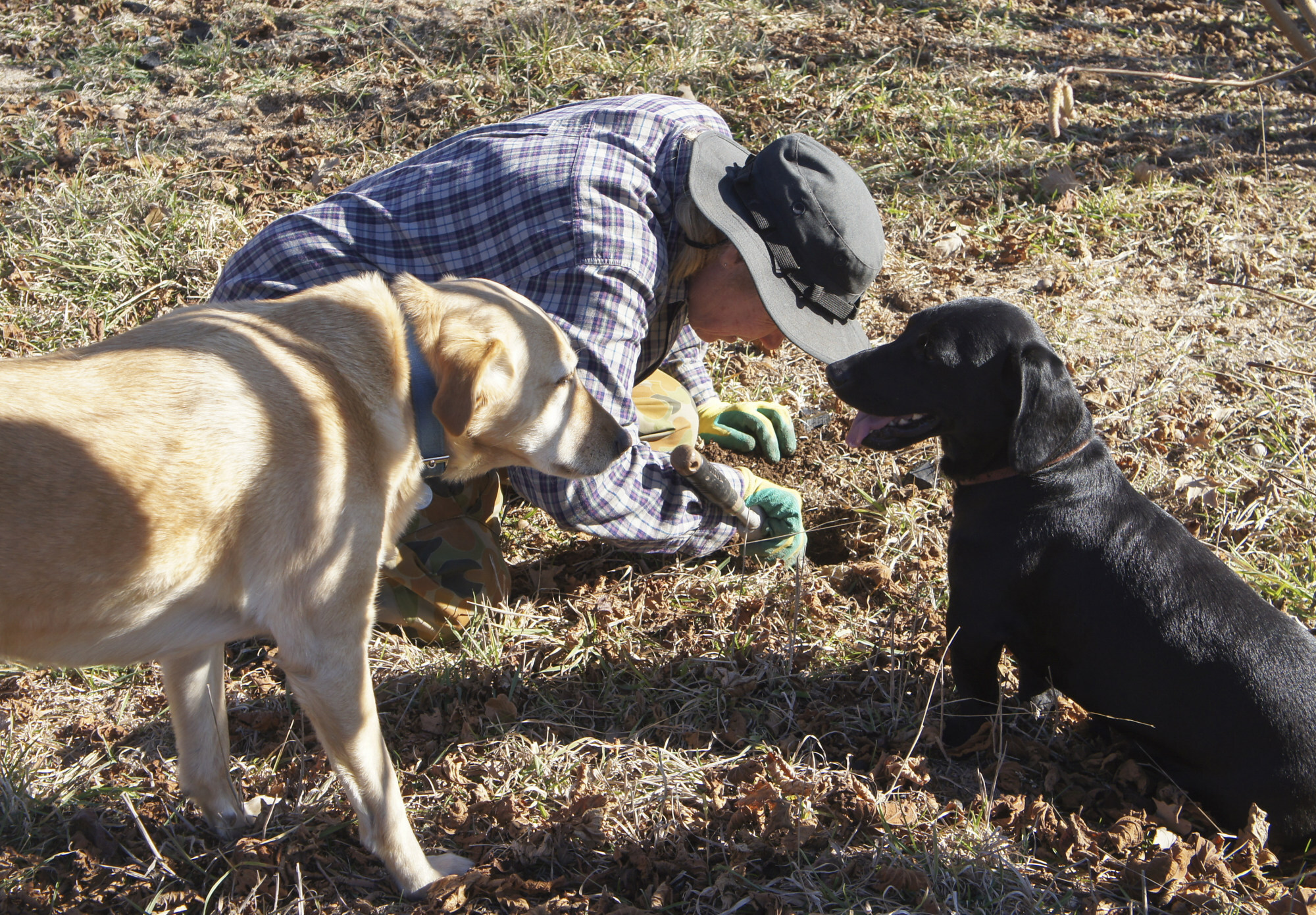Why are truffles so expensive, and are black or white the best? The pungent foodie fungi is only found in a few lucky countries – but Italian truffles remain the most coveted and costly

Legend has it that a farmer spotted his pig digging at the root of a tree. After eating what looked like mushrooms, the pig was found passed out. Upon investigation, the farmer discovered the aromatic tubers … or now as we know them, truffles.
“The story is true,” says Luca Stanzani, vice-president of Appennino USA, world brand ambassador of Italy’s Appennino truffle.
Truffles have long been known to various civilisations. There are recorded recipes that have ancient Egyptians eating the tubers covered in goose fat. The Greek and the Romans used them for medicinal purposes. A myth surrounding the coveted fungus is that the brule, or dead grass surrounding a tree which has truffles at its roots, is a gift from the gods after the ground is struck by lightning.

Truffles, however, disappeared from the history books in the Dark Ages when their intoxicating aroma was seen as “witches fare”, and did not make their heady reappearance on nobles’ plates until the reign of France’s Louis XIV in the 17th century, when once again they came to the forefront of refined dining among the European elite.
While pigs have largely been associated with the discovery of truffles, they are no longer used to harvest the esteemed tubers.
“It is illegal in Italy to use pigs in truffle hunting,” says Stanzani. “Firstly, it’s impractical because the pigs are known to eat the truffles. Secondly, the pigs tend to destroy the natural fauna of the forest. Dogs are used in truffle hunting.”
Fabio Mariella, executive chef of Hong Kong’s Paper Moon, elaborates. “The dogs are specially trained to only find the truffles, which are very expensive. If you have a dog that can find white truffles, you will be a rich man,” laughs Mariella. “A pig would just want to eat the truffles.”

White truffles, diamond of the kitchen
This autumn, Stanzani is selling black truffles for US$400 per pound (450g) while white truffles are for sale for 10 times the price, at US$4,000. The reason for such a vast price difference is simply supply and demand.
“Black truffles, you can get anywhere in Europe such as in Romania, Bulgaria and Slovenia. White truffles, you can only get from Italy and small batches from Serbia, but mainly Italy,” says Stanzani.
Though not an exact science, black truffles can be cultivated, especially in the southern hemisphere, but this is yet to be achieved for white truffles. This leaves the harvest of white truffles every year at the mercy of the elements.
“It depends on the summer months,” says the ambassador of truffles. “If it doesn’t rain from May to August, then the ground is too dry for the truffles to grow.”
Umberto Bombana, co-owner of Hong Kong’s three-Michelin-starred restaurant 8½ Otto e Mezzo Bombana, agrees.

“Of course, the weather mostly affects the quality and the quantity of white truffles. They are subject to many natural factors including weather and soil quality. The scent of the white truffle is another determining factor,” he adds. “For example, the Tuber magnatum Pico – exclusive to Alba, Italy – possesses a unique yet irreplaceable scent, which makes it a supreme and delectable ingredient.”
White vs black
Since there is a big difference in price, what’s the difference in flavour of the two colours of tuber?
“Both white and black truffles are gemstones of my motherland,’’ says Bombana. “But their taste and fragrance are totally different. White truffles have a pungent aroma, with a slightly garlicky flavour similar to shallots and rosemary. On the contrary, black truffles have a relatively fresh scent with fruity notes of vegetables, akin to fennel, celery and basil.”

“I like working with neutral flavours for white truffle, such as cheese, potato, eggs, chestnuts and lobster,” says Claudio Favero, chef de cuisine at Tsim Sha Tsui’s Sabatini Ristorante Italiano. “White truffles are pure aroma, you will lose the flavour if you cook with it. Black tends to be less aromatic but has more that can be teased out while cooking. Personally, I like using black truffles in sauces and I think it works well with meat.”
Executive chef of Giacomo in Causeway Bay, Keith Yam points out that the quantity makes a difference between black and white truffles too. “With white you can shave as much as you want on top of a dish and it’ll just be fragrant.” He says. “Whereas black, when you shave about 30 grams, you will start to get a bitter taste.”
Winter vs summer
Black truffles are available in two seasons – March to December, known as winter truffles of the melansporum species; and May to July otherwise known as summer truffles. Summer truffles can be separated into two types. The ones from Italy and France, and the ones from Australia. The ones harvested from May to July in Europe are a different species from winter and known as Tuber aestivum Vitt. The ones harvested in the Australian winter borrow from the melansporum spores in France. So what is the difference in taste?
“Of course, there is a difference. The summer Australian truffles are milder, the Perigord (a region in France) is a little more intense. It’s not better or worse, just different,” says Bombana.

“I try to use mainly Italian truffles at Paper Moon,” says Mariella. But to him, the difference in flavour is significant. “You can now farm truffles from Yunnan in China, as well as Australia. You can tell the difference straight away. The black truffles from Europe and the ones that are cultivated in Australia and China are totally different.”
White or black, summer or winter, one thing is for certain – chefs love the ingredient and will include it on their menu whenever they can. Like sunshine after rain, black truffles will follow white, and summer will come after winter. What are you waiting for? Let the truffling begin.

- While black truffles are grown in Australia, China and across Europe – including France, Romania and Bulgaria – white truffles are still only found in Italy and Serbia
- Black truffles are available in two seasons – known as winter truffles and summer truffles – but is it really worth paying up to 10 times more for the rarer white breed?